The waterbird count has been picking up steam over the last week with several new arrivals in just the last few days. Today (April 24) we saw the first Caspian Terns of the season and the first White-winged Scoter. Numbers of other species have been picking up too, such as Red-necked Grebe, 79 of which flew past the point today. As is typical, all of the grebes were spotted flying north out over Lake Superior. On some days, there have also been a few grebes sitting on the water out in Whitefish Bay.
Most of today’s 18 Common Loons were spotted migrating out over the lake, but a few cut inland and flew right over the point, giving great looks from the waterbird shack. The daily high count of Red-throated Loons so far this season occurred yesterday, when nine were counted. Surprisingly, these were all in one flock that flew by in mid-morning. This number is sure to be exceeded; in 2016 a flock of ten flew right over the waterbird shack one morning during Spring Fling, and that wasn’t the only flock of that size that day!
A few people were treated to the sight of an Iceland Gull landing on Whitefish Bay today, which gave good looks in the scope as it floated on the lake. Flocks of Sandhill Cranes heading north in long lines or V-formations continue to be seen every day from both the waterbird shack and the hawk deck, and they often announce their presence loudly with their bugling cries that reverberate over the sound of the wind.
The rarity highlight of the season so far would have to be the NEOTROPIC CORMORANT that flew by with a flock of Double-crested Cormorants on Saturday, April 22! This was only the third time this species has been spotted in Michigan, and the first time for the Upper Peninsula and Whitefish Point.
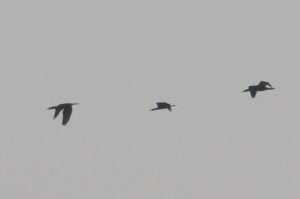
Documentary shot of Neotropic Cormorant flanked by two Double-crested Cormorants. Photo by Louie Dombroski
I look forward to seeing many readers of this blog out at the point at Spring Fling and throughout the spring. And when you just can’t get up here, you can still visit Whitefish Point vicariously by going to the Dunkadoo web site and checking out the progress of the Waterbird Count here.

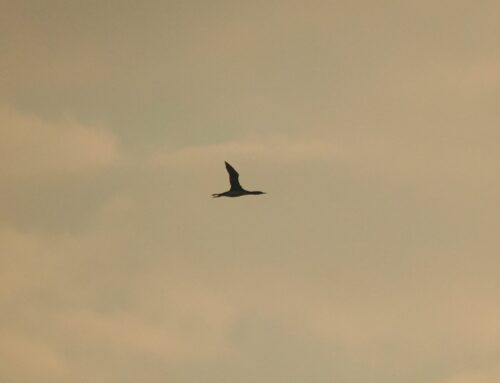

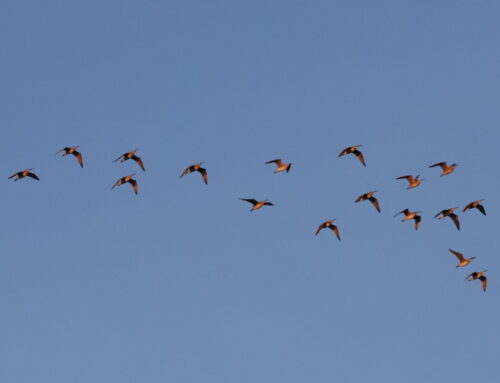
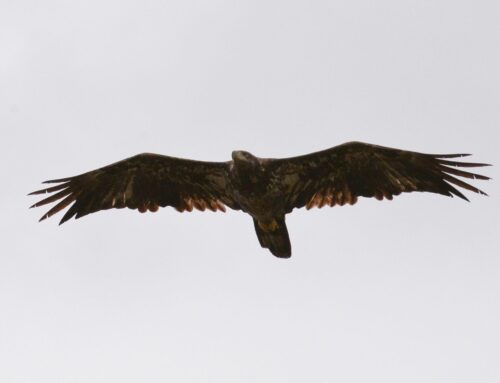
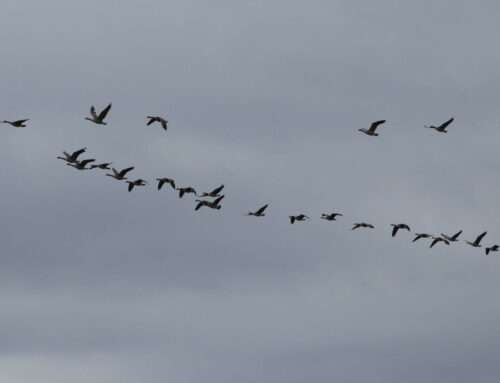
I’m so tempted to come up this wkend…it’s only 3 1/2 hours past the cabin!